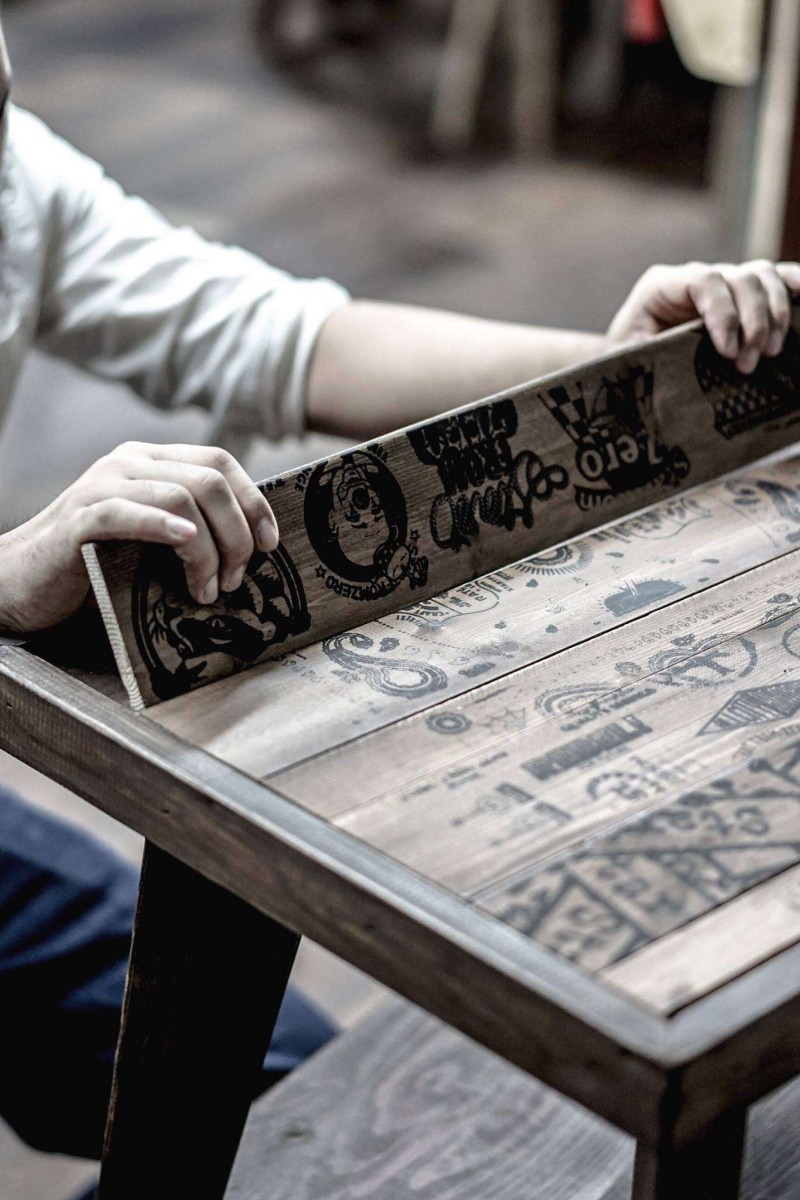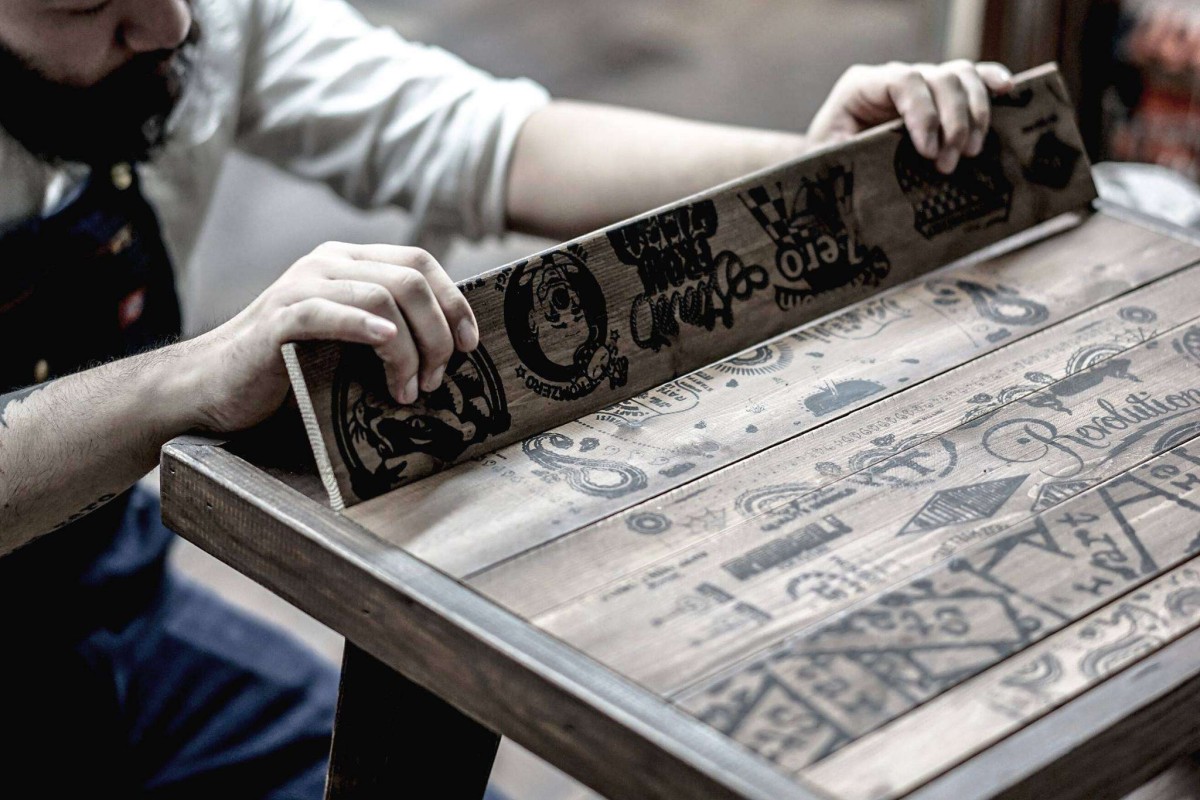
Start From Zero’s street art boss Dom tells Young Post about his struggles and successes in Hong Kong’s creative industry
 Dom’s pieces, like this coffee table, are one-of-a-kind originals.
Dom’s pieces, like this coffee table, are one-of-a-kind originals.Graffiti has been around for millennia, but street art is something that really came to life in the 20th century. Innovative artists created odd, sometimes derogatory designs that captured the eye and made a statement. With artists such as Andy Warhol and Banksy breaking new ground in this craft, budding artists all over the world were inspired to create art with no limits.
That includes Dominic Chan, better known to the world as the street artist Dom. As a young boy, Dom was especially inspired by Shepard Fairey, the Seattle artist and owner of the clothing brand OBEY.
Dom can still recall the first time he ever saw some of Fairey’s work. “I was walking around Times Square in Causeway Bay and saw this huge poster that had this incredible design,” he said. “It was the OBEY logo, but at the time I had no idea what that was. His designs stood out to me.”
Dom tried to find out more about it on the internet, where he learned about the concept of stencils, and found a website that connected him to many artists around the world.
“At that time, I would trace a lot of stickers, and I helped this company spread their stencils to Hong Kong, New Zealand, and Australia. This was when I learned the basics, such as drawing around letters.”
“I had been doing my own designs for around three or four years, but I didn’t know how to draw or design professionally, since I didn’t study anything like that. I just drew however I was feeling, in my own way,” Dom says. “Around that time I met my business partner, Katol Lo. He loved my work, but I hated it.”
The two creative masterminds put their heads together to launch their brand, Start From Zero, in 2000. Dom wanted to inspire the “angry people in Hong Kong who often started from zero”, hence the name of his company. “I started street art about 15 years ago, when I was small and had nothing to do,” said Dom. “I wanted to start something special, as at that time in Hong Kong no one did any street art.”
Lacking this modern twist on art, Hong Kong was longing for a sense of vibrancy in its streets. Using a distinctive stencilling technique, Dom produced striking designs that stood out all over Hong Kong’s streets, walls, and cafes.
In trying to balance their full-time jobs with their new commitment. Dom and Lo suffered their fair share of letdowns. The biggest obstacle for a street artist, Dom says, is the police.
“In Hong Kong it’s hard to survive doing street art because no one gets what it is. A lot of people may find it interesting, but they soon give up. They just think its graffiti, which is vandalism to the police. They think graffiti is illegal; they view everything about this industry as illegal. There is no respect.”
Out of all the mediums he’s used – stencilling, graffiti, and stickers – Dom found stickers both the easiest and most experimental. “People are happier when I give them stickers,” he says, pointing out another benefit: “People use stickers everywhere, so it spreads my company’s name.”
Since it started 16 years ago, Start From Zero has had a lot of exhibitions in Hong Kong and in other countries, and throughout that time it has constantly evolved its design structure. The original street stencil art developed into a clothing brand (Rat Cave), and now focuses on producing wood furniture and decor.
“We displayed the art on canvas, which got very boring,” says Dom. “So we realised, why not do wood, and use designs from the street?”
After investing more and more time into the “woodware” industry, Dom realised that to produce great pieces he needed to expand his hardware, and buy some machines. On a visit to the workshop where his team creates and constructs wooden furniture, Dom told Young Post that most of his pieces are exclusive and one-of-a-kind – including the house where we spoke with him, which he says is favourite creation.
Besides producing signature furniture for brands like Vans and the new chic café Elephant Grounds, Dom revealed that he is working with new companies to expand Start From Zero’s horizons. He also hosts monthly workshops at the studio, teaching people the basics of woodwork and guiding them through the creation of their own piece of furniture. When he looks to the future of Start From Zero, he imagines doing more of this.
“Now, I don’t do much street art, not anymore,” he says. “But if I go to other countries I bring some stickers and posters.” He explained that he hasn’t forgotten his roots, but he “wants to make sure the woodwork part is stable, and make sure the workers feel stable and happy” before he returns to the streets to unveil new concepts.